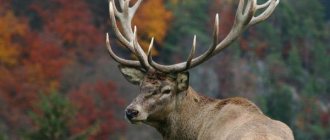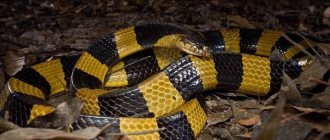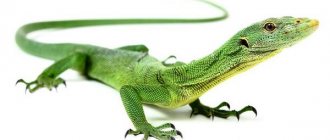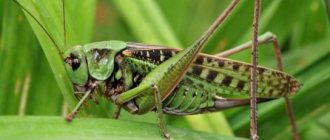Koichi Kamoshida/Getty Images
There are about 200 different species of monkeys around the world. They come in all shapes and sizes, from the adorable 110g pygmy marmoset to the massive 54kg mandrill. To keep things simple, monkeys are divided into two main categories: New World monkeys, which live in Mexico, Central America and South America, and Old World monkeys, which live in Africa and Asia. There are a few notable differences; Old World monkeys, for example, do not have prehensile (grasping) tails, but some are born with special pouches on their cheeks designed to store food. ()
Whether it's the cry of a howler monkey that can be heard 5 kilometers away, or the crimson head of a bald uakari that reflects the level of health, there is something special about each of these intelligent primates. Here are 18 of the most unusual species of monkeys on earth.
Marmoset monkeys
Monkeys of the family are miniature and have claw-shaped nails. The structure of the feet is close to that of tarsiers. Therefore, species of the genus are considered transitional. Marmosets belong to the higher primates, but among them they are the most primitive.
Wistity
The second name is common marmoset. The length of the animal does not exceed 35 centimeters. Females are about 10 centimeters smaller. Upon reaching maturity, primates acquire long tufts of fur near their ears. The decoration is white, the center of the muzzle is brown, and its perimeter is black. Marmosets have elongated claws on their big toes. Primates use them to grab branches, jumping from one to another.
Pygmy marmoset
It does not exceed 15 centimeters in length. A plus is the 20-centimeter tail. The primate weighs 100-150 grams. Externally, the marmoset appears larger because it is covered with long and thick fur of a brown-golden color. The red hue and mane of hair make the monkey look like a pocket lion. This is an alternative name for the primate.
The pygmy marmoset is found in the tropics of Bolivia, Colombia, Ecuador and Peru. With sharp incisors, primates gnaw the bark of trees, releasing their juices. This is what the monkeys eat.
Black tamarin
It does not descend below 900 meters above sea level. In mountain forests, black tamarins have a twin in 78% of cases. This is how monkeys are born. Tamarins give birth to fraternal babies only in 22% of cases. From the name of the primate it is clear that it is dark. The length of the monkey does not exceed 23 centimeters, and weighs about 400 grams.
Crested tamarin
Otherwise called pinche monkey. On the head of the primate there is an erokeus-like crest of white, long hair. It grows from the forehead to the neck. During times of unrest, the crest stands on end. In a good-natured mood, the tamarin is smoothed.
The crested tamarin's muzzle is bare right down to the area behind the ears. The rest of the 20cm long primate is covered in long hair. It is white on the chest and front legs. The fur on the back, sides, hind legs and tail is reddish-brown.
Piebald tamarin
A rare species, lives in the tropics of Jurasia. Outwardly, the piebald tamarin is similar to the crested tamarin, but does not have the same crest. The animal has a completely bare head. The ears appear large against this background. The angular, square shape of the head is also emphasized.
Behind it, on the chest and front legs, there is long white hair. The tamarin's back, legs, hind legs and tail are reddish-brown. The piebald tamarin is slightly larger than the crested tamarin, weighs about half a kilogram, and reaches a length of 28 centimeters. All marmosets live 10-15 years. Their size and peaceful disposition make it possible to keep representatives of the genus at home.
Chimpanzee
All chimpanzees live in Africa, in the Niger and Congo river basins. Monkeys of the family are not taller than 150 centimeters and weigh no more than 50 kilograms. In addition, in chipanzees, males and females differ little; there is no occipital carina, and the supraorbital carina is less developed.
Bonobos
Considered the smartest monkey in the world. In terms of brain activity and DNA, bonobos are 99.4% close to humans. Working with chimpanzees, scientists taught some individuals to recognize 3 thousand words. Five hundred of them were used by primates in oral speech. The height of bonobos does not exceed 115 centimeters. The standard weight of a chimpanzee is 35 kilograms. The wool is dyed black. The skin is also dark, but the bonobo's lips are pink.
common chimpanzee
Finding out how many species of monkeys belong to chimpanzees, you find out only 2. In addition to bonobos, the common one belongs to the family. He's bigger. Individual individuals weigh 80 kilograms. Maximum height is 160 centimeters.
There are white hairs on the tailbone and near the mouth of the common chimpanzee. The rest of the fur is brown-black. White hairs fall out during puberty. Before this, older primates consider children to be marked and treat them condescendingly.
Compared to gorillas and orangutans, all chimpanzees have a straighter forehead. At the same time, the brain part of the skull is larger. Like other hominids, primates walk only on their feet. Accordingly, the chimpanzee's body position is vertical. The big toes are no longer opposed to the others. The length of the leg exceeds the length of the palm.
So we figured out what types of monkeys there are . Although they are related to humans, the latter are not averse to feasting on their younger brothers. Many aboriginal peoples eat monkeys. The meat of prosimians is considered especially tasty. Animal skins are also used to make bags, clothes, and belts.
Gibbons
They are distinguished by elongated forelimbs, bare palms, feet, ears and face. On the other body, the fur, on the contrary, is thick and long. Like macaques, there are ischial calluses, but less pronounced. But gibbons do not have a tail.
Silver gibbon
It is endemic to the island of Java and is not found outside its borders. The animal is named after the color of its fur. She is grey-silver. The bare skin on the face, arms and feet is black. The silvery gibbon is medium-sized, not exceeding 64 centimeters in length. Females often stretch only 45. The weight of the primate is 5-8 kilograms.
Yellow-cheeked crested gibbon
You cannot tell from the females of the species that they are yellow-cheeked. More precisely, females are completely orange. On black males, golden cheeks are striking. It is interesting that representatives of the species are born light, then darken together. But during puberty, females return to basics, so to speak.
Yellow-cheeked crested gibbons live in the lands of Cambodia, Vietnam, and Laos. Primates live there in families. This is a feature of all gibbons. They form monogamous couples and live together with children.
Eastern hoolock
The middle name is the singing monkey. It lives in India, China, and Bangladesh. The males of the species have stripes of white fur above their eyes. On a black background they look like gray eyebrows. The average weight of a monkey is 8 kilograms. The primate reaches 80 centimeters in length. There is also a Western hoolock. He has no eyebrows and is a little larger, weighing about 9 kilos.
Siamang compound-toed
in the species of great apes , but is a large one among gibbons, gaining 13 kilograms of mass. The primate is covered with long, shaggy black hair. It fades to gray near the monkey's mouth and chin. There is a throat pouch on the siamang's neck. With its help, primates of the species amplify sound. Gibbons have a habit of calling each other between families. This is why monkeys develop their voice.
Pygmy gibbon
It cannot be heavier than 6 kilograms. Males and females are similar in size and color. At all ages, monkeys of the species are black. Once on the ground, dwarf gibbons move with their arms behind their backs. Otherwise, long limbs drag along the ground. Sometimes primates raise their arms up, using them as balancers. All gibbons move through trees by alternating their forelimbs. The manner is called brachiation.
Reproduction and lifespan
Females who have reached 2 h. years of age, choose a partner themselves. There may be several males. Pregnancy lasts 140-150 days. These primates do not reproduce seasonally. The female can give birth twice a year. Usually there are 2, rarely 3 cubs in a litter.
The father is mainly involved in raising the offspring. But taking care of the babies is the responsibility of the entire flock. One newborn can have up to 5 nannies. The role of the female is to feed her offspring and restore her strength.
Newborn marmosets
weigh approximately 14 g. After birth, babies hang on their mother’s stomach for several months, closer to the milk. And when the little marmosets get a little stronger, they sit on the backs of their fathers for up to 6 months.
A month after birth, the babies molt and become covered with hair characteristic of an adult. Already in the third month, the cubs walk independently, and those who do not want to do this are forced.
After 6 months, marmosets eat adult food. Puberty begins at 12 months. Only after 18 months will they become completely independent. Sexual maturity occurs after two years. At this age, the leader encourages him to leave the pack and start his own family.
The marmoset monkey usually lives to be 10-12 years old. A record was broken at one zoo. The primate lived there for 18.5 years. There is a high mortality rate among baby marmosets
.
Out of 100 babies born, only 67 babies will survive. In nature, their population is threatened by the destruction of their habitat. Lion marmosets
are under threat of extinction . 11 other species are also at risk.
In the photo there is a lion marmoset
In nature, primates are awake for 12-14 hours and it is important not to disrupt this daily routine. It is recommended to install a special lamp for them that provides good lighting.
It is better to always maintain the temperature high enough, at least 20 degrees, so that they feel comfortable. Another important thing to remember is that marmosets are afraid of drafts.
The cage needs to be cleaned regularly, otherwise it will perceive the old smell as foreign and will begin to intensively mark the territory, which is undesirable for the owners. A place to stay overnight is a must. Primates are shy and need to have a place to hide.
How to choose and cost of an animal
The choice of the type of monkey to keep depends, first of all, on the thickness of the wallet. This animal is expensive, and its maintenance is also quite expensive.
Weigh this argument well: if there is little money, then there is nothing to choose. The answer to the question of how much a domestic monkey costs is from $1,000. Marmosets sell for $1,500 to $1,800. Some types of monkeys cost up to $8,000.
Pay attention to the size of the living space: it is better if the monkey has a separate room. Monkeys can carry dangerous diseases, so make sure you have a certificate from a veterinarian.
Do not be tempted by low prices and attractive offers, refuse to buy primates from dubious dealers (read the reviews).
The animal must have a healthy and well-groomed appearance and not be aggressive. It is good to buy baby monkeys, then it will be easier to tame them.
When buying an adult animal, you need to take into account that it is accustomed to the conditions of its previous owner and considers him the leader.
Please note that these are very sociable animals. If you have a reserved character or work “from morning to night”, refuse to breed them at home.
Some species of monkeys live up to 40 years, so consider whether your age will allow you to properly care for the animal over these years.
Callimico monkeys
They were recently allocated to a separate family; previously they were classified as marmosets. DNA tests showed that Callimiko is a transitional link. There is a lot from the capuchins. The genus is represented by a single species.
Marmoset
It is one of the little-known, rare species of monkeys. Their names and features are only occasionally described in popular science articles. The structure of the teeth and, in general, the skull of the marmoset is similar to that of the capuchin. The face looks like a tamarin's face. The structure of the paws is also marmoset.
The marmoset has thick, dark fur. On the head it is elongated, forming something like a cap. Seeing her in captivity is good luck. Marmosets die outside their natural environment and do not produce offspring. As a rule, out of 20 individuals in the best zoos in the world, 5-7 survive. At home, marmosets live even less often.
Narrow-nosed monkeys
Among the narrow-nosed monkeys there are species of monkeys from India , Africa, Vietnam, and Thailand. Representatives of the genus do not live in America. Therefore, narrow-nosed primates are commonly called Old World monkeys. These include 7 families.
Monkeys
The family includes small and medium-sized primates, with forelimbs and hindlimbs of approximately equal length. The first fingers of the hands and feet of apes are opposed to the remaining fingers, like those of humans.
Representatives of the family also have ischial calluses. These are hairless, worn-out areas of skin under the tail. The faces of the ape-like creatures are also bare. The rest of the body is covered with fur.
Hussar
Lives south of the Sahara. This is the limit of the monkeys' range. On the eastern borders of the Hussars' dry, grassy territories, their noses are white. Western representatives of the species have black noses. Hence the division of hussars into 2 subspecies. Both are included in the red monkey species because they are orange-scarlet in color.
Hussars have a slender, long-legged body. The muzzle is also elongated. When the monkey grins, powerful, sharp fangs are visible. The long tail of a primate is equal to the length of its body. The weight of the animal reaches 12.5 kilograms.
Green monkey
Representatives of the species are common in western Africa. From there, monkeys were brought to the West Indies and the Caribbean islands. Here the primates blend in with the greenery of the tropical forests, with coats that have a swampy tint. It is distinct on the back, crown, and tail. Like other monkeys, green monkeys have cheek pouches. They resemble those of hamsters. Macaques carry food supplies in their cheek pouches.
Cynomolgus macaque
Otherwise called a crabeater. The name is associated with the macaque's favorite food. His fur, like that of the green monkey, has a grassy tint. Expressive brown eyes stand out against this background. The length of the Javan macaque reaches 65 centimeters. The monkey weighs about 4 kilograms. Females of the species are approximately 20% smaller than males.
Japanese macaque
Lives on the island of Yakushima. There is a harsh climate, but there are hot and thermal springs. The snow melts next to them and primates live. They bask in hot waters. The leaders of the packs have the first right to them. The lower “links” of the hierarchy are freezing on the shore.
Among macaques, the Japanese one is larger than the others. However, impressions are deceiving. If you cut off the thick, long, steel-gray fur, the primate will be of medium size. Reproduction of all monkeys is associated with sexual skin. It is located in the area of the ischial callus and swells and turns red during ovulation. For males, this is a signal to mate.
Monkey in the house: pros and cons
The positives of monkey breeding include:
- Cheerful character.
- Funny look.
- Friendly character.
- Well developed intellect.
- They become very attached to their owner, actively showing love with affection, kisses, and hugs.
- Primates require a lot of attention, so they will brighten up loneliness.
Disadvantages of keeping monkeys at home:
- Aggressive, angry behavior when not properly cared for.
- The need to constantly care for the animal, play, caress, pay attention.
- Females have menstrual flow monthly.
- Animals can masturbate.
- Monkeys can infect humans with hepatitis or HIV.
- Some species mark territory or rub themselves with urine.
- High cost of monkeys, high maintenance costs.
When deciding to buy a pet monkey, remember that this animal will require a lot of time and effort.
Be prepared not to deviate from the goal, do not throw the unwanted pet out into the street, take pity on it, because it is not for nothing that they say that we are responsible for those we have tamed. Study the nature of the primate, guarantee the animal attention - and love will be rewarded to you a hundredfold.
What do primates eat?
Monkeys are a special type of animal that eats everything, their diet depends on the places in which they live, on land or on the ground. Monkeys living in trees eat leaves, fruits, buds, nuts, and also eat large insects.
Primates that lead a terrestrial lifestyle consume plant roots and shoots, and they especially love fern leaves. In addition to fruits, special species eat fish, mice, lizards, and also like to feast on beetles and grasshoppers.
Features of pet behavior
Monkeys are social animals, they are in dire need of communication and will require the maximum amount of attention. In addition, they are active, they definitely need toys, space for movement, and bars to swing.
Activity increases upon reaching puberty. Boredom can cause an animal to become depressed and aggressive. It is recommended, in particular, to hide food in closed boxes or boxes with holes. Monkeys express their emotions with the help of screams, roars, chirps, and whistles.
Female primates are very affectionate towards their cubs and can become aggressive during the birth of babies, protecting them. It's funny to watch animals during the birth of their babies.
Did you know?
The male wistiti takes upon himself all the care of the female and children, giving them the best pieces without resistance. Monkeys are cunning and resourceful - keep this in mind when setting up a cage for them and letting them out for a walk.
When raising a monkey, remember that they are like children: if they become disobedient and angry, it means that something is bothering them.
Find out the reason for bad behavior, talk to the monkey calmly, reward good behavior with food and affection and get an affectionate, gentle and obedient pet.
Gorillas
Like orangutans, they are hominids. Previously, scientists used this name only for humans and their ape-like ancestors. However, gorillas, orangutans and also chimpanzees have a common ancestor with humans. Therefore, the classification was revised.
Coast gorilla
Lives in equatorial Africa. The primate is approximately 170 centimeters tall and weighs up to 170 kilograms, but often around 100. Males of the species have a silver stripe running down their back. Females are completely black. Representatives of both sexes have a characteristic red marking on the forehead.
Lowland gorilla
Found in Cameroon, Central African Republic and Congo. There, the lowland gorilla lives in the mangroves. They are dying out. Along with them, the gorilla species is disappearing. The dimensions of the lowland gorilla are comparable to those of the coastal gorilla. But the color of the coat is different. Lowland individuals have brown-gray fur.
Mountain gorilla
The rarest, listed in the International Red Book. There are less than 200 individuals left. Living in remote mountainous areas, the species was discovered at the beginning of the last century. Unlike other gorillas, the mountain gorillas have a narrower skull and thick and long hair. The forelimbs of the monkey are much shorter than the hind limbs.











